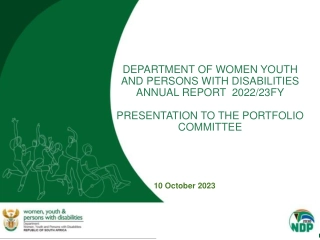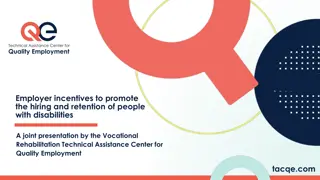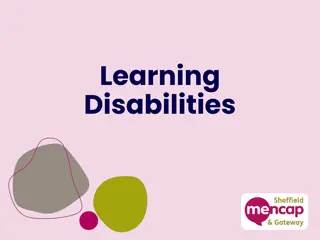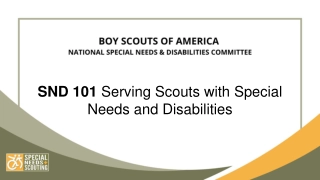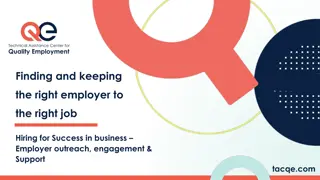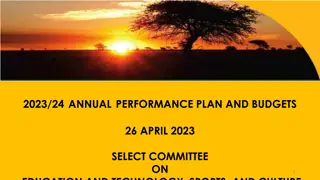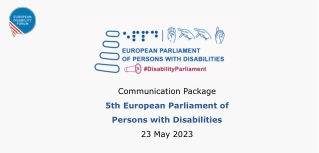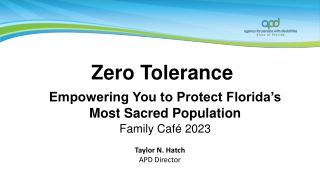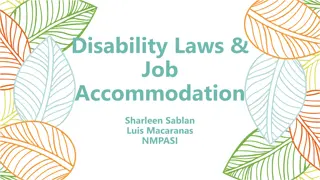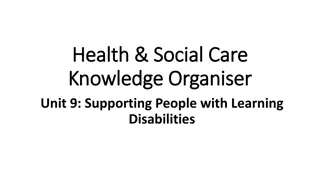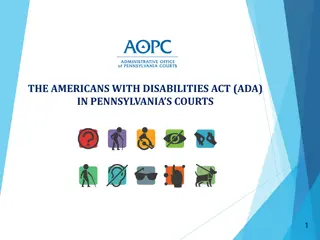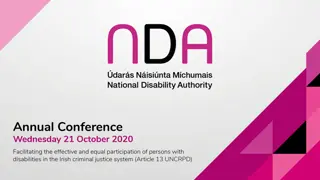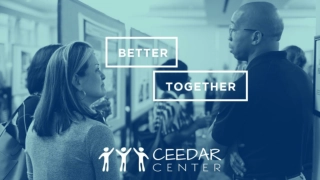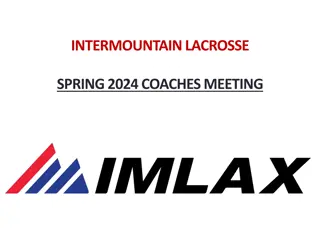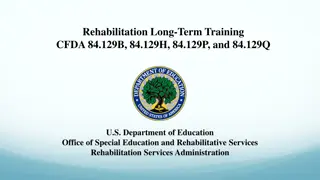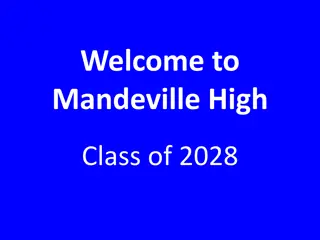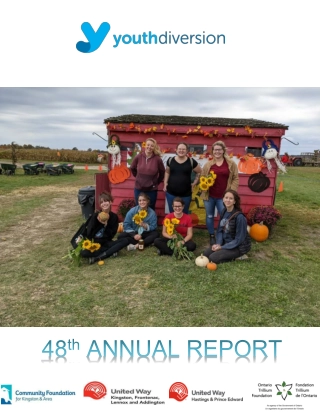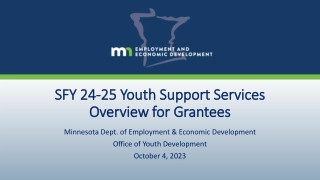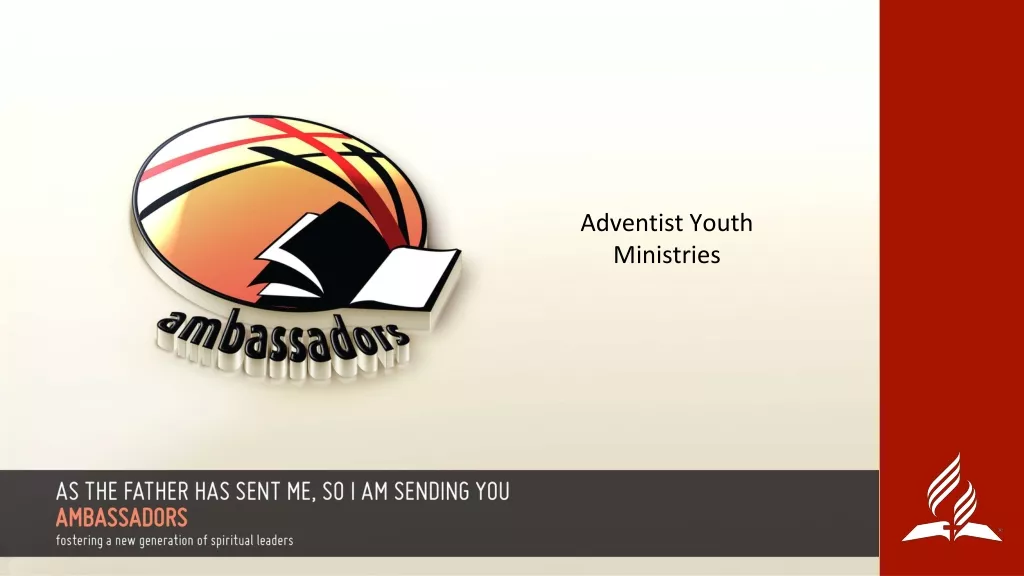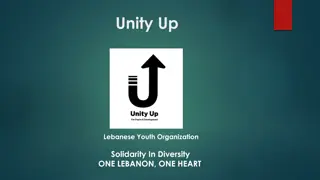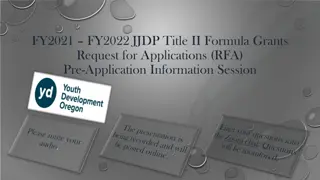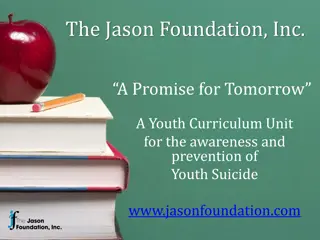Improving Post-School Outcomes for Youth with Disabilities
In Kansas, transition services for students with disabilities have evolved over the years to focus on successful outcomes after high school. Indicator 14 measures the percentage of youth with IEPs who enroll in higher education or gain competitive employment within one year of leaving high school. The latest data show progress towards these goals, indicating areas of success and areas that need further attention. Strategies such as WIOA Pre-ETS programs aim to empower students with disabilities for successful transitions to post-school life.
Download Presentation
Please find below an Image/Link to download the presentation.
The content on the website is provided AS IS for your information and personal use only. It may not be sold, licensed, or shared on other websites without obtaining consent from the author. Download presentation by click this link. If you encounter any issues during the download, it is possible that the publisher has removed the file from their server.
Presentation Transcript
Indicator 14: Post School Outcomes It s Time to Move the Needle!
Special Education Leads the Way Expect, Engage, Empower: Successful Transitions for All in Kansas
Transition History 1983 Pilot transition services added to the Education for All Handicapped Children Act. 1990 The Education for All Children Act renamed the Individuals with Disabilities Education Act. IDEA now provides definitions and transition requirements. 2004 IDEA updated IDEA now requires accountability measures for transition: Indicator 13 compliance review annually, Indicator 14 Post School Outcomes measured one year after students leave high school. Students must exit with a Summary of Performance. 2014 WIOA Pre-ETS now provided to students with disabilities in 5 areas: Job Exploration & Counseling, Workplace Readiness Training, Work-based Learning, Self-Advocacy, Counseling in Post-secondary Education
Indicator 14 Quick Summary What s Being Measured? Indicator 14: Indicator 14: Percent of youth who are no longer in secondary school, had IEPs in effect at the time they left school, and were: A. Enrolled in higher education within one year of leaving high school. (Associate degree program or higher) Enrolled in higher education or competitively employed within one year of leaving high school. (at least 20 hours per/week for 3 months, minimum wage or higher, with non-disabled peers) Enrolled in higher education or in some other postsecondary education or other training program; or competitively employed or in some other employment within one year of leaving high school. (adds other training program less than an associate s degree, adds other employment less than 20hrs, less than 90 days, less than minimum wage etc.) B. C.
How Did We Do? Number of respondent Number of respondent youth who are no longer youth who are no longer in secondary school and in secondary school and had IEPs in effect at the had IEPs in effect at the time they left school time they left school Number of Number of respondent respondent youth youth FFY 2022 FFY 2022 Target Target Measure Measure FFY 2021 Data FFY 2021 Data FFY 2022 Data FFY 2022 Data Status Status A. Enrolled in higher education (1) 238 1048 26.84% 41.00% 22.71% N B. Enrolled in higher education or competitively employed within one year of leaving high school (1 +2) 589 1048 55.16% 65.60% 56.20% N C. Enrolled in higher education, or in some other postsecondary education or training program; or competitively employed or in some other employment (1+2+3) 710 1048 69.62% 79.09% 67.75% N
Kansas 2023 Census Results Number of Students Eligible for 2023 Census 4230 Number of Students with No Contact Info 322 (7.6%) Number of Students in the 2023 Census 3908 Number of Students with disconnected, wrong, blocked, or business phone numbers 487 (12.4%) Number of Students with valid contact info - 3419 Number of Actual Respondents 1048 Total Response Rate 26.83%
Kansas 2023 Census Results Response Rate for Opt Response Rate for Opt- -in Districts in Districts 51 districts 1,111 Students in Census 51 districts 1,111 Students in Census Number of Respondents Number of Respondents 611 611 Total Response Rate Total Response Rate 55.00% 55.00% Response Rate for all other districts Response Rate for all other districts 206 districts, 2795 Students in Census 206 districts, 2795 Students in Census Number of Respondents Number of Respondents 437 437 Total Response Rate Total Response Rate 15.63% 15.63%
Kansas Leaders in Post School Outcomes Anjanette Tolman Dawn Gresham Jessica Engelland Sarah Sanders Dedra Raines Roger Christian Scott Hoyt Nichole Honeywell Kristin O Brien Kevin Harrell Jennifer Harrington Kristi Houston Meaghan Etheridge Trina Schmidt Dan Wray Khris Thexton Kay Hill Nikki Heiman Jon Harding Director Director Director Director Director Director Director Director Director Director Director Director Director Director Director Director Director Director Director USD #233 USD #260 USD #308 USD #321 USD #345 USD #383 USD #389 USD #409 USD #450 USD #497 USD #501 ANW Interlocal #603 SCKSEC Interlocal #605 SKACD Interlocal #613 ECKSEC Interlocal #614 Barton County Special Services Coop Chautauqua and Elk County Coop Marshall County Coop KS School for the Blind
Kansas 2023 Census Results Data for Districts choosing not to Opt Data for Districts choosing not to Opt- -in in 206 Districts 206 Districts 58 Districts with only 1 respondent 58 Districts with only 1 respondent 78 Districts with ZERO respondents 78 Districts with ZERO respondents
Opt-in or not? A tale of 2 districts District A District A District B District B # of students in census = # of students in census = 5 5 9 9 # of completed interviews = # of completed interviews = 1 1 8 8 Measure A % = Measure A % = 0% 0% 50% 50% Measure B % = Measure B % = 0% 0% 75% 75% Measure C % = Measure C % = 0% 0% 75% 75%
Respondent Demographics Total Number of Respondents = 1048 Number Percentterv,048 Former Student 270 25.76% Parent 712 67.94% Guardian 42 4.01% Other 24 2.29%
Call Disposition Call Disposition Data: Total Interviews Attempted 3,906 100.00%rcent Completed Interviews Blocked Call Business Number Disconnected Language Barrier Mid-Interview Termination No Answer Refused Respondent Not Available Take Me Off the List Voicemail Wrong Number 1,048 7 25 408 13 29 523 137 58 46 1,565 47 26.83% 0.18% 0.64% 10.45% 0.33% 0.74% 13.39% 3.51% 1.48% 1.18% 40.07% 1.20%
How Do We Move the Needle? A two A two- -pronged approach pronged approach #1 Better response rates produce better data. Better data #1 Better response rates produce better data. Better data leads to more effective interventions. Also, better APR reports leads to more effective interventions. Also, better APR reports for individual districts for individual districts #2 Let s implement effective strategies/interventions that will #2 Let s implement effective strategies/interventions that will enable students to access post enable students to access post- -secondary education and/or training or competitive employment training or competitive employment secondary education and/or
Prong #1: Getting to Better Response Rates #1 Communicate #1 Communicate Make sure that Parents and Students know they will be contacted in June of the year following Make sure that Parents and Students know they will be contacted in June of the year following graduation or exit from school. Disseminate this info at IEP meetings, SOP review, in newsletters, on graduation or exit from school. Disseminate this info at IEP meetings, SOP review, in newsletters, on social media etc. Communicate early. Communicate often social media etc. Communicate early. Communicate often
Getting to Better Response Rates #2 Verify Contact Info Thoroughly #2 Verify Contact Info Thoroughly Make sure you have valid contact info for student and parents. Last year we had over 400 students Make sure you have valid contact info for student and parents. Last year we had over 400 students in the census with no valid contact info. Over 200 students had no contact info at all. Verify contact in the census with no valid contact info. Over 200 students had no contact info at all. Verify contact info through 1) Post School Outcomes Web Application, 2) through your IEP system, 3) through your info through 1) Post School Outcomes Web Application, 2) through your IEP system, 3) through your SIS. SIS.
Prong #1: How Do We Get Better Response Rates? #3 Test your contact info! #3 Test your contact info! Great opportunity to inform students/parents of upcoming interviews as you verify contact info is Great opportunity to inform students/parents of upcoming interviews as you verify contact info is accurate. accurate.
Prong #1: How Do We Get Better Response Rates? #4 Opt #4 Opt- -in! in! The results speak for themselves The results speak for themselves
Prong 2: Getting to Better Outcomes #1 Effective Transition Plans in the IEP #1 Effective Transition Plans in the IEP Students who have effective transition goals and services are more likely to be Students who have effective transition goals and services are more likely to be successful successful
Getting to Better Outcomes #2 CTE is Key! #2 CTE is Key! Students who are Concentrators or Completers are more likely to pursue post Students who are Concentrators or Completers are more likely to pursue post secondary education and/or be employed. secondary education and/or be employed. Common Barriers Include: Special Education Teachers/Transition Coordinators don t know what Common Barriers Include: Special Education Teachers/Transition Coordinators don t know what pathways are available, Students denied access because they can t pass the safety test, Students pathways are available, Students denied access because they can t pass the safety test, Students denied access because they can t pass the certification test after completing the class, paraeducators denied access because they can t pass the certification test after completing the class, paraeducators are not available, pull are not available, pull- -out time is scheduled during the time classes are available out time is scheduled during the time classes are available Perkins funding requires schools to make CTE classes available to special populations, have you Perkins funding requires schools to make CTE classes available to special populations, have you reviewed your high schools CTE participation data? reviewed your high schools CTE participation data?
Getting to Better Outcomes #3 FAFSA Completion #3 FAFSA Completion Common Barriers Include: Students don t want to attend post Common Barriers Include: Students don t want to attend post- -secondary training/education programs, Parents don t want to provide tax info necessary to training/education programs, Parents don t want to provide tax info necessary to complete the FAFSA complete the FAFSA secondary
Getting to Better Outcomes #4 Registration with local Workforce Center #4 Registration with local Workforce Center Workforce Centers have federal mandates to provide services to special Workforce Centers have federal mandates to provide services to special populations. They will work with schools to provide a variety of services designed to populations. They will work with schools to provide a variety of services designed to help students access employment after graduation. help students access employment after graduation.
Getting to Better Outcomes #5 Build Partnerships with Transition Service Providers #5 Build Partnerships with Transition Service Providers Partner with Pre Partner with Pre- -ETS, Families Together, Your local Transition Council, CIL, CDDO ETS, Families Together, Your local Transition Council, CIL, CDDO and other transition service providers. and other transition service providers.
Getting to Better Outcomes #6 Transition Tuesday Webinar #6 Transition Tuesday Webinar Connect with KSDE s Transition Tuesday Webinar Monthly! Connect with KSDE s Transition Tuesday Webinar Monthly!
Who is Getting Better Results for Students? SCKSEC Interlocal #605 SCKSEC Interlocal #605 Kaw Valley USD #321 Kaw Valley USD #321 Topeka USD #501 Topeka USD #501
Whats Next? Join us for the 2024 Special Education Leadership Conference Join us for the 2024 Special Education Leadership Conference June 25 June 25- -27 27
Connect with Successful Transitions Expect, Engage, and Empower: Successful Transitions for All! Expect, Engage, and Empower: Successful Transitions for All! Expect, Engage, Empower Resource Database Expect, Engage, Empower Resource Database Transition Tuesday Webinars Transition Tuesday Webinars CTE Access for Special Pops Grant CTE Access for Special Pops Grant Workforce Contact Info Workforce Contact Info Office of Registered Apprenticeship Office of Registered Apprenticeship
Indicator 14 Contact For Indicator 14 questions aewing@ksde.org 785-296-3860




